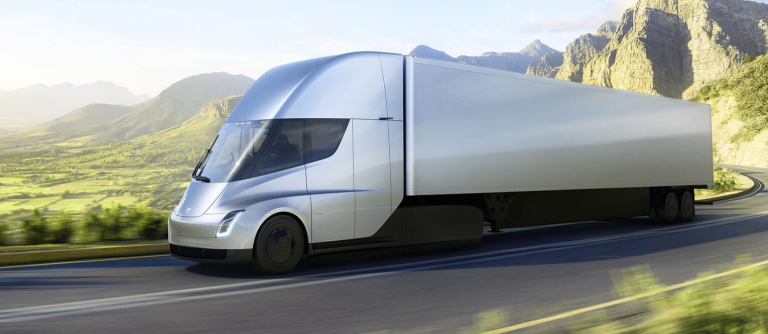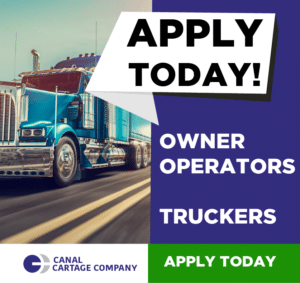In the past ten years, there has been an unprecedented technological advancement in the trucking industry. Many people think that when it comes to autonomous vehicles, it is not a matter of “if” trucking in America will be transformed, but when. And others standby the concern that under no circumstance should 80,000 pounds be traveling down the highway, without an experienced professional trained truck driver behind the wheel.
Automation works for many types of industries. But there will also be a critical human element necessary to safeguard commercial freight. To ensure compliance, deter theft and provide expert interventions that get goods to the businesses who need them.
To say that the trucking industry is divided on driverless trucks and battery-operated technology would be an understatement. But with increasing pressures regarding fuel emissions weighing heavily on the American trucking industry, the future may be electric Class 8 Trucks. And sooner than we think.
Elon Musk Moves to Texas: The Most Lucrative Freight Hub in America
There are many reasons why someone would move from California to Texas. Wildfires and earthquakes? You bet. Taxes? Well, Texas has a zero-tax state so that appeals to many entrepreneurs and corporate business owners. California has one of the highest personal income taxation rates, particularly for high earning individuals.
Elon Musk is currently the world’s second-wealthiest person. So, the tax break makes absolute sense. No one imagined the tech leader would make a break from Silicon Valley, but he has been building his Tesla Inc. Gigafactory in Austin. In November, the Tesla Gigafactory kicked into high gear, with three construction shifts daily. That increase in crew shifts will reduce construction time by doubling production.
Originally, Elon Musk indicated that the structure would be completed by December 30th, to begin trial production for the cyber truck. The Telsa Cyber truck is a civilian pick-up truck design that will be the primary production at the location. What better state to launch a new pick-up truck than Texas? If you haven’t noticed, we like our trucks (big and small) in the Lonestar state.
<iframe width=”560″ height=”315″ src=”https://www.youtube.com/embed/c88Tvz16drg” frameborder=”0″ allow=”accelerometer; autoplay; clipboard-write; encrypted-media; gyroscope; picture-in-picture” allowfullscreen></iframe>
It is pretty futuristic. The Tesla Cybertruck feels more like something we’ve seen in that old movie Robocop. But driving a truck that will be run totally on electric and solar energy? No gas bills. That will definitely appeal to some people.
We’re a little bit worried though. We didn’t see a cup holder. But if you are expecting the Tesla Cybertruck to cost as much as Tesla top end cars, guess again. The base price for the space age designed truck is $39,000. And as a new resident of Austin Texas, Mr. Musk will be able to oversee operations of his new project more closely.
The Pursuit of Driverless Transport Truck Technology by Tesla
But there may be another reason why Elon Musk, the world renown inventor, business, and technology leader may have just moved to Texas. And that is to double down on his development of self-driving trucks as a solution to the driver-shortage that the American trucking industry is facing.
The Gigafactory located in Nevada manufacturers the Tesla semi truck. Two of Tesla’s Class 8 trucks made their first delivery in March of 2018. A trip of 240 miles each way, from the Gigafactory to the Tesla car plant, also located in Nevada.
The new design of the Tesla Semi may have a range of 600 or more miles, or 300-watt hours per kilo of truck and cargo weight. A maximum load weight on the current model is 80,000. The influence of the battery weight is still an engineering challenge, as it would deduct maximum load for commercial cargo. And would make the Tesla Semi not appropriate for heavy weight loads requiring feather weight chassis and tractors.
The Telsa Semi is slated for sale starting at $150,000 (US), for a truck with a single electric charge range of 300 miles. Another model with the capacity to drive up to 500 miles on a single charge, starts at $180,000. While that sounds like a big investment, when you consider that the average truck driver spends more than $50,000 per year on fuel costs. Essentially, the Tesla Semi would pay for itself in fuel savings in only three years of operation.
Are the Tesla Semi Trucks Fully Autonomous and Driverless?
While autonomous trucks make many professionals in the trucking industry nervous, it seems like Tesla is moving in a different direction. The technology provided in the Tesla Semi is not fully autonomous. It is semi-autonomous, which means it still requires a driver.
The autonomous features can be added to the Tesla Semi at an additional cost. But testing is not yet complete. And it has not met all DOT safety requirements yet. The semi-driverless features would allow CDL operators to use a highly advanced autopilot. One that has built in sensors to improve safety and reduce collisions.
More proof that Elon Musk’s intention is not to replace truck drivers (but to make the job easier, more fuel efficient and emissions compliant) is the fact that each truck is designed with a sleeper berth. Its space age design may take some getting used to, but the compact sleeper berth appears comfortable and appropriate for long-haul drivers.
What Are the Technology Specifications of the Tesla Semi Truck?
Early designs of electronic vehicles (cars) showed very week powertrains. Unless you are buying a sportscar, many electric cars lack the power that you get and pick-up speed, from a traditional gas or diesel engine.
That’s not the case with the Tesla Semi. It does 0-60 in twenty second’s flats. That is some serious power. The engineered design outsmarts many of the blind spots that conventional Class 8 trucks have. And the aerodynamic design of the Tesla Semi has been built to reduce rollovers, in the even of a collision.
The smaller version of the Tesla Semi is called the Roadster. It may have cost-saving applications for local lightweight drayage, and reefer services for short-haul refrigerated cargo.
Given that the Gulf of Mexico is America’s highest volume import and export hub, Texas is an ideal place to start building and selling the new Tesla heavy trucks. They will not be driverless for some time, while they iron the safety issues out. But they could mean a dramatic change in the trucking industry.
Imagine that you bought a new Tesla Semi and paid for it in four years. For the duration of the vehicle life, you would have zero fuel costs. And that means increased profit margins for carriers and owner-operators.
It may even encourage younger entrepreneurs to become owner-operators and help reduce the shortage of CDL truckers in America. While the investment is steep, the payoff for a zero-fuel truck is simple math. And it could revolutionize our industry.



